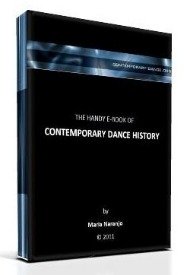The role of society in the evolution of Modern and Contemporary dance
by Maria Hatz
(Madrid, Spain)
In what ways was the evolution of Modern, Post Modern and Contemporary dance affected by the social and political factors of every period?
Or was it the other way around, namely that Dance with its new ideas had an effect on men and women and their every day life?
I would like to know how it was all received and how all the changes came about in the dance world. The question arises from the fact that in the work of most of the modern dancers the personal element and experience is present, as is the need of expression and communication.
Thus this makes me assume that society, which is a factor that affects the formation of every personality, had some part to play all the way along.
Thank you in advance for any help. It's much appreciated.
Comments for The role of society in the evolution of Modern and Contemporary dance
|
||
|
||
The handy e-book of CONTEMPORARY DANCE HISTORY:
The Dance Thinker is our occasional E-zine. Fill in the form below to receive it for free and join us.
Read:
"The Dance Thinker"
BACK ISSUES
Post contemporary dance announcements (workshops, auditions, performances, meetings and important news... it is free.)



